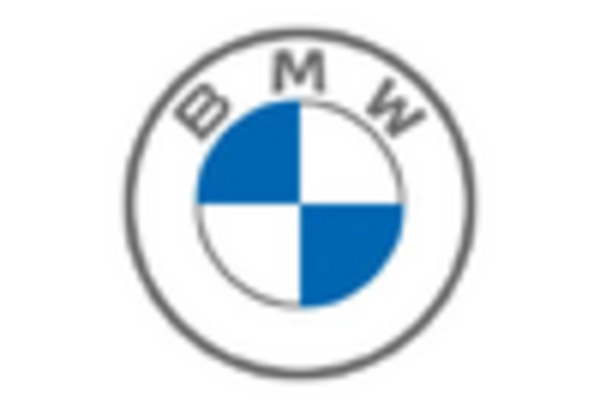Expansion of Charging Infrastructure
The expansion of charging infrastructure is a critical factor influencing the Plug-In Hybrid Electric Vehicle Battery Market. As more charging stations become available, the convenience of owning a PHEV increases, thereby attracting a larger consumer base. This trend is particularly relevant in urban areas where charging accessibility is essential for potential buyers. The development of fast-charging technologies also enhances the appeal of PHEVs, as it reduces downtime for users. According to industry reports, the number of public charging stations is expected to double in the next few years, which could significantly impact the adoption rates of Plug-In Hybrid Electric Vehicles. This growth in infrastructure is likely to create a more favorable environment for the battery market.
Increasing Fuel Prices and Economic Factors
The fluctuation of fuel prices and broader economic factors appear to influence consumer choices regarding vehicle purchases. As fuel prices rise, consumers may seek alternatives that offer better fuel efficiency, such as Plug-In Hybrid Electric Vehicles. The Plug-In Hybrid Electric Vehicle Battery Market stands to gain from this shift, as PHEVs provide a cost-effective solution by combining electric and gasoline power. Economic conditions, including disposable income levels, also play a role in consumer purchasing decisions. As more individuals opt for PHEVs to mitigate fuel costs, the demand for advanced battery technologies is likely to increase, further propelling the market forward.
Rising Demand for Eco-Friendly Transportation
The increasing awareness of environmental issues appears to drive the demand for eco-friendly transportation solutions. Consumers are becoming more conscious of their carbon footprints, leading to a surge in interest in Plug-In Hybrid Electric Vehicles (PHEVs). The Plug-In Hybrid Electric Vehicle Battery Market is likely to benefit from this trend, as PHEVs offer a balance between traditional combustion engines and fully electric vehicles. According to recent data, the market for PHEVs is projected to grow at a compound annual growth rate (CAGR) of approximately 15% over the next five years. This growth is indicative of a broader shift towards sustainable mobility solutions, which could further enhance the demand for advanced battery technologies.
Technological Innovations in Battery Efficiency
Technological advancements in battery efficiency are pivotal for the Plug-In Hybrid Electric Vehicle Battery Market. Innovations such as solid-state batteries and improved lithium-ion technologies are enhancing energy density and reducing charging times. These developments not only improve vehicle performance but also address consumer concerns regarding range anxiety. As manufacturers invest in research and development, the market is expected to witness a significant transformation. For instance, the introduction of batteries with higher energy capacities could lead to an increase in the average range of PHEVs, making them more appealing to a broader audience. This trend suggests a promising future for the industry as it adapts to evolving consumer preferences.
Government Policies Supporting Electric Mobility
Government policies aimed at promoting electric mobility are likely to play a crucial role in shaping the Plug-In Hybrid Electric Vehicle Battery Market. Various countries are implementing stringent emissions regulations and offering incentives for electric vehicle adoption. For example, tax rebates and subsidies for PHEV purchases are becoming more common, encouraging consumers to consider these vehicles. Additionally, investments in charging infrastructure are essential for supporting the growth of the PHEV market. As governments continue to prioritize sustainable transportation, the demand for Plug-In Hybrid Electric Vehicle batteries is expected to rise, creating a favorable environment for manufacturers and stakeholders in the industry.


















Leave a Comment